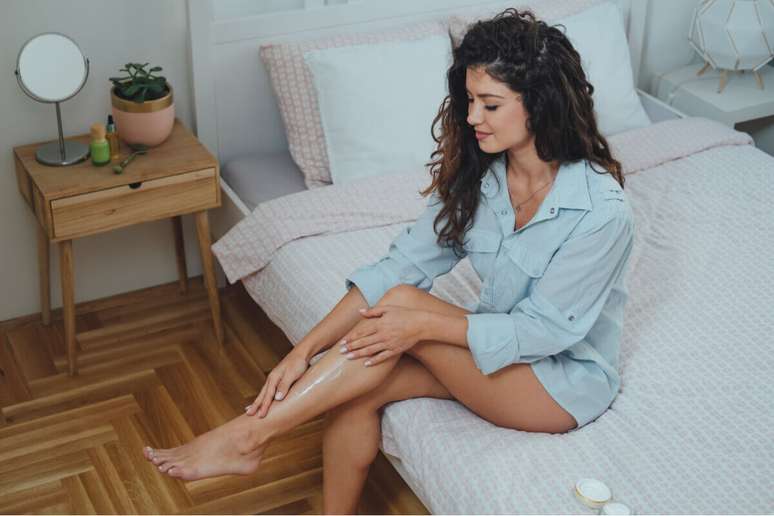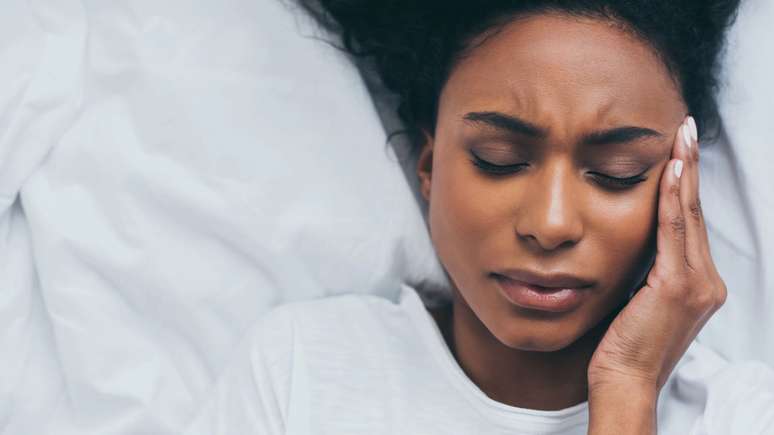Doctors explain how some actions may or may not help fight skin holes
Gynoid lipodystrophy, popularly known as cellulite, is a recurring condition that tends to cause discomfort among women. “Cellulite is an inflammation of the adipose tissue, in which the adipose cells undergo a transformation process, presenting excess fat inside and deformities of the wall. These irregularities end up projecting onto the surface, leading to the formation of a series of ripples on the skin”, explains dermatologist Dr. Paola Pomerantzeff, member of the Brazilian Society of Dermatology.
According to the doctor, the decrease in collagen fibers can make this problem worse. “Adipose tissue is flaccid and requires fibrous septae (collagen) to be supported. When this collagen is not enough, cellulite appears”, explains Dr. Paola Pomerantzeff.
Cellulite is much more common in women due to the hormone estrogen, which is directly involved in this inflammatory process, but bad habits are also involved. For this reason, experts often say the cause is multifactorial.
Therefore, dermatologists Dr. Abdo Salomão Jr and Dr. Paola Pomerantzeff and Cosmetology specialist Dr. Cláudia Merlo highlight the myths and truths regarding the appearance and worsening of cellulite. Watch!
1. Is cellulite a genetic condition?
REAL. The genetic factor is considered one of the main causes of cellulite. As explained by Dr. Cláudia Merlo, the study published by the Revista de Dermatologia Cosmética (JCD) demonstrated that at an anatomical level there are differences that justify the higher incidence of cellulite in women.
“The skin is composed of two layers of fat (superficial and deep), separated by the superficial fascia. In humans there are a greater number of lobes of subcutaneous fat and a greater number of fibrous bands, more fibrous connections between the superficial fascia and the dermis compared to women, therefore greater force is required to break the fibrous connections and for this reason they suffer less from the formation of cellulite”, explains the doctor.
two. Don’t thin people have cellulite?
Myth. According to Dr. Cláudia Merlo, when we look at a thin woman we do not perform a body composition assessment, so she may have high percentage of fat and consequent cellulite.
“We don’t know about the lifestyle habits of this thin woman and above all about the consumption of inflammatory foods she eats,” explains the expert. The problem also increases with age, due to the loss of collagen and all the fibrous band structures that make up the skin.
3. Does being overweight make cellulite worse?
REAL. According to Dr. Abdo Salomão Jr., basically, female hormones predispose fat in the hips and thighs, and where there is greater fat accumulation, there is a greater chance of cellulite developing.
“The fat compresses the veins and lymphatic channels, causing swelling in the area. Then, the area, with little circulation, further aggravates the cellulite. From then on a vicious cycle is created which, if not treated correctly, can remain forever” , he explains.
4. Does cellulite appear only after the age of 25?
Myth. Dr. Paola Pomerantzeff explains that it can appear at any time. “It usually happens later pubertywhen estrogen levels increase, however, it can appear at other times in case of sedentary lifestyle and/or increase in localized fat”, explains the doctor.

5. Does soda make cellulite worse?
REAL. Soft drinks contain a high concentration of sugar and sodium. “Sugar increases localized fat and sodium increases fluid retention, worsening local circulation. Not only soft drinks, but all foods high in sugar and fat can aggravate cellulite, as they increase fat cells,” he explains Dr. Paola Pomerantzeff.
According to Dr. Cláudia Merlo, another of the main ones bad habits Linked to the development and worsening of cellulite are: inflammatory diet (with consumption of foods with a high glycemic index), sedentary lifestyle, obesity and poor water intake.
6. Does smoking contribute to the appearance of cellulite?
REAL. According to Dr. Paola Pomerantzeff, smoking affects the body’s functions and can therefore influence the development of cellulite. “The toxic substances present in cigarettes affect various functions of the body, worsening the oxygenation and microcirculation of the skin, which reduces the production of collagen and favors the accumulation of localized fat”, explains the dermatologist.
7. Does drinking water help fight cellulite?
Depends. As Dr. Cláudia Merlo explains, increasing your water intake helps eliminate toxins from the body, which influence the good quality of the skin. “The ideal is to drink at least 2 liters of water a day,” says Dr. Paola Pomerantzeff.
But this is not the only solution to the problem, underlines Dr. Cláudia Merlo, a change in lifestyle must also be adopted. “Diet, exercise and lymphatic drainage are highly recommended to treat cellulite,” she says.

8. Do tight clothes cause cellulite?
Depends. Dr. Paola Pomerantzeff explains that the wear tight clothes It does not cause cellulite, but it can worsen existing cellulite, as it worsens lymphatic and blood circulation. “This causes fluid retention and worsens local microcirculation. If you are trying to eliminate cellulite, choose more comfortable clothes,” says the doctor.
“Compression stockings can help as long as they are guided by vascular specialists, since the compression characteristics of the stocking are numerous, so the use is personalized”, adds Dr. Cláudia Merlo.
9. Do topical creams help treat cellulite?
Myth. According to Dr. Cláudia Merlo, the creams in cosmetics for cellulite I am not able to treat them. “[Os cremes] They cannot reach the deep layers, where the fat, the lymphatic system and the fibrous bundles are located, which are structures linked to the cause of cellulite”, he points out.
However, according to Dr. Paola Pomerantzeff, products that contain active ingredients such as caffeine, caffeisilane c, ginkgo biloba and green tea can help. “These creams must be applied daily to the areas of the body affected by cellulite through rigorous massage. But with outpatient treatments, an improvement in the appearance of the skin is expected,” says the doctor.
10. Are the results of anti-cellulite treatments definitive?
Myth. Dr. Cláudia Merlo underlines that, as far as results are concerned, improvement skin structure and reduction of skin relief. “This result is not definitive, since cellulite has multifactorial causes, so new ones can appear throughout life,” he says.
By Guilherme Zanette
Source: Terra
Ben Stock is a lifestyle journalist and author at Gossipify. He writes about topics such as health, wellness, travel, food and home decor. He provides practical advice and inspiration to improve well-being, keeps readers up to date with latest lifestyle news and trends, known for his engaging writing style, in-depth analysis and unique perspectives.








